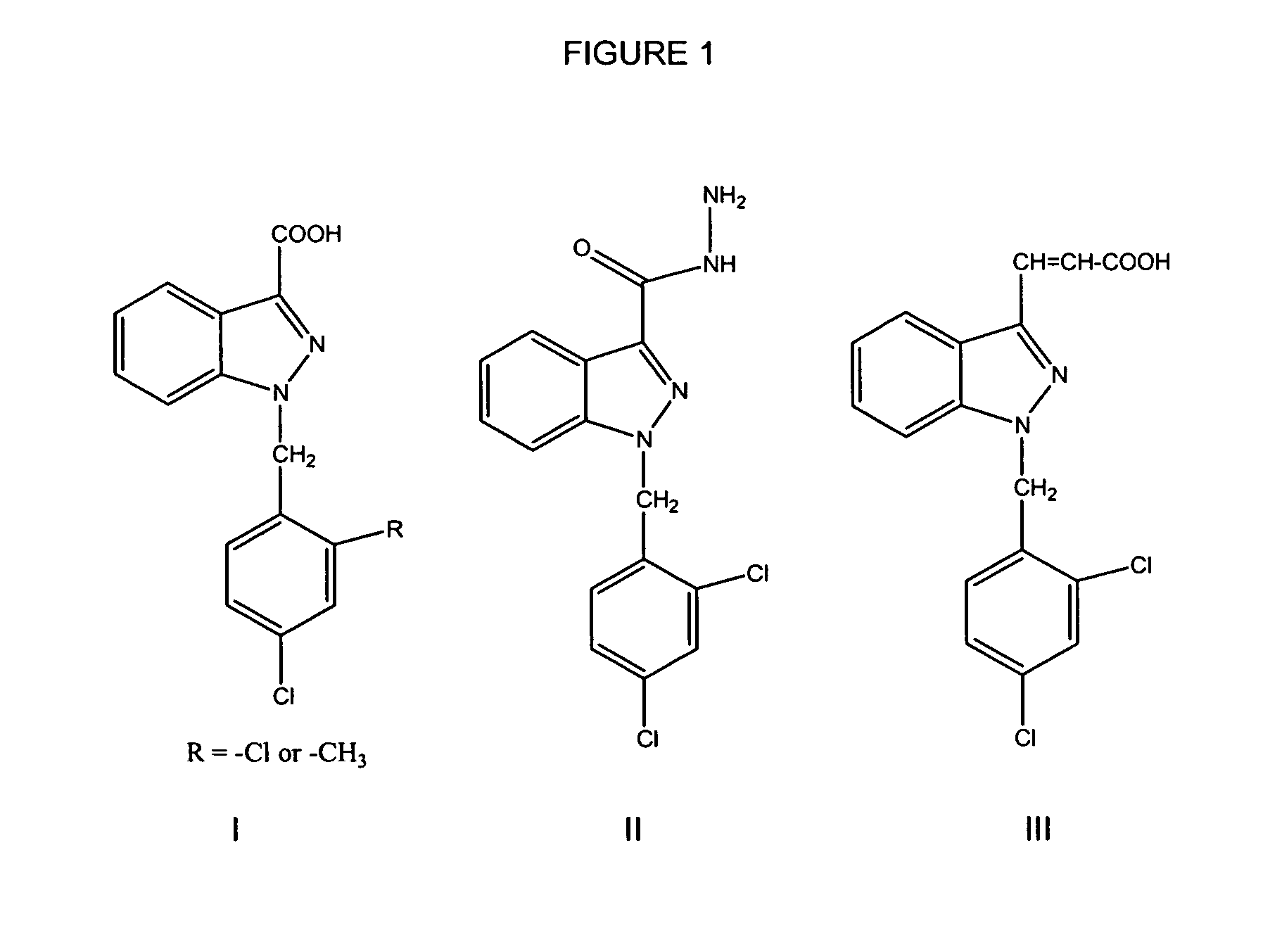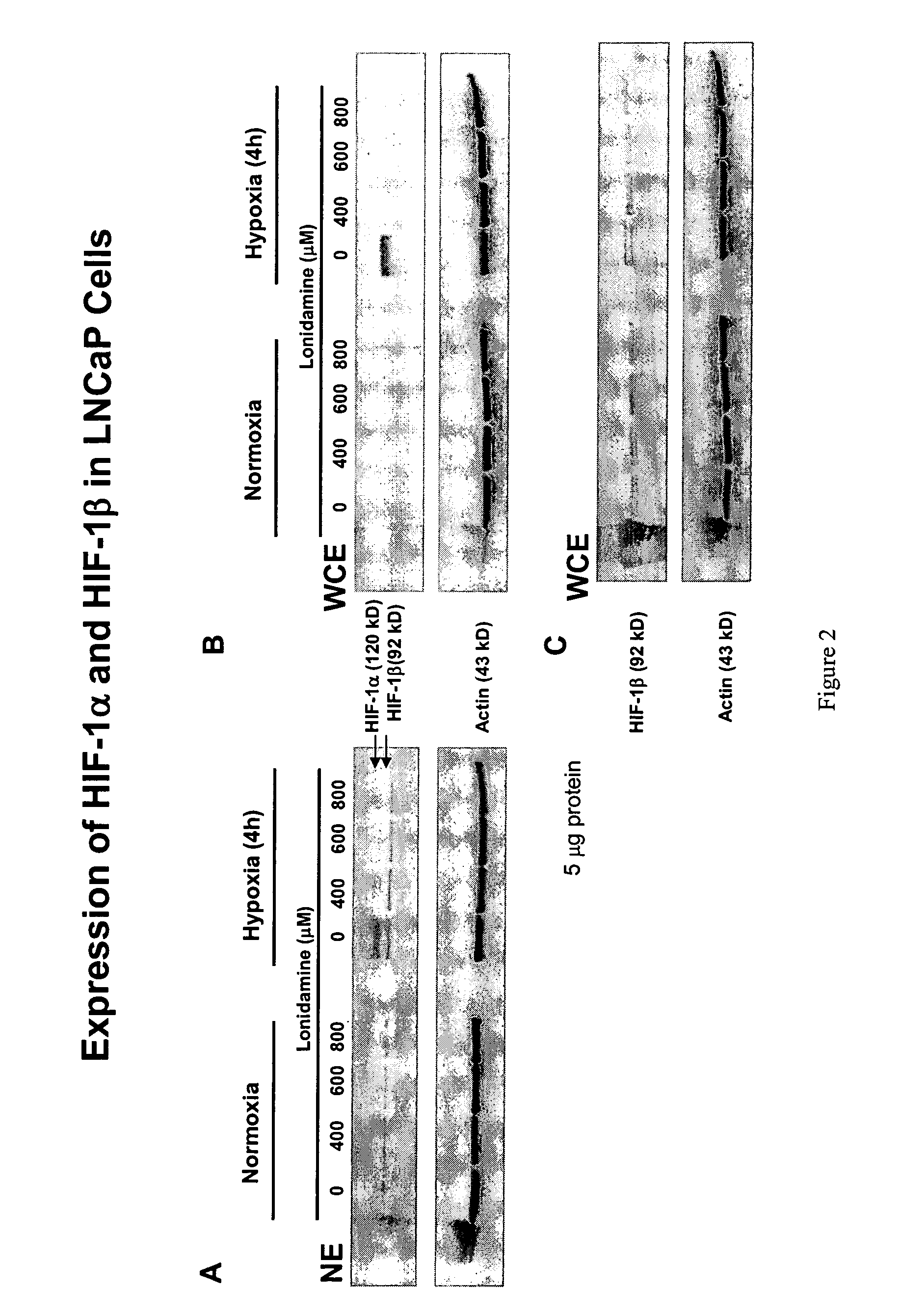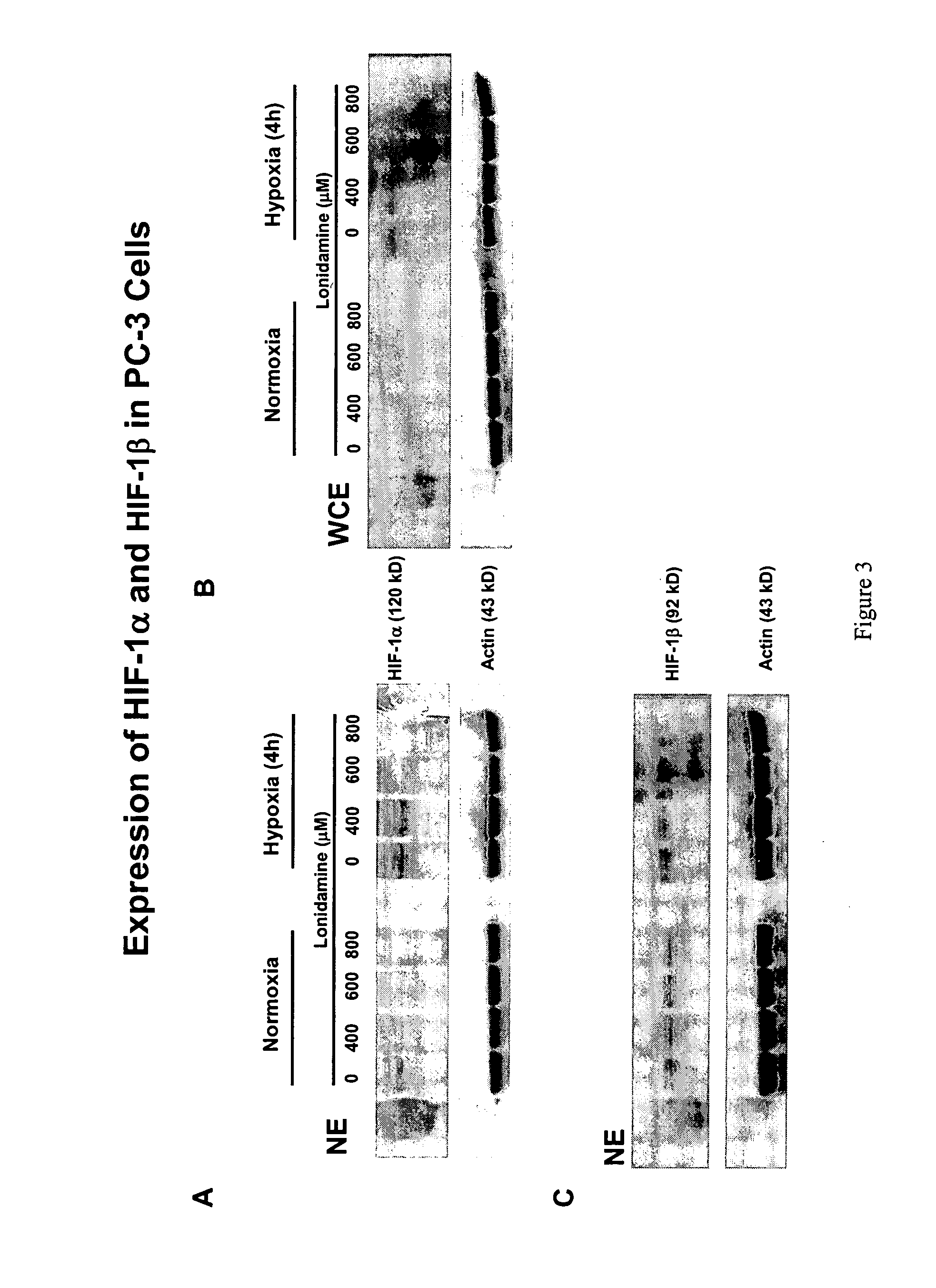Treatment of benign prostatic hyperplasia
a benign prostatic hyperplasia and benign technology, applied in the field of treatment and prevention of benign prostatic hyperplasia, can solve the problems of loss of libido, serious side effects, and loss of muscle mass and tone in males, and achieve the effects of reducing the risk of side effects, and reducing the effect of surgery
- Summary
- Abstract
- Description
- Claims
- Application Information
AI Technical Summary
Benefits of technology
Problems solved by technology
Method used
Image
Examples
example 1
[0124]A Phase II randomized dose comparison study of lonidamine administration for the treatment of symptomatic benign prostatic hyperplasia is conducted. Patients are males 50 to 80 years of age with BPH confirmed by ultrasonography, a serum PSA >2, and no evidence of prostate cancer. Lonidamine (150 mg tablet; Doridamina formulation) is administered 150 mg p.o. TID (intermediate dosage) or QD (low dosage) 8 weeks. Patients receiving TID dosing take the compound 5 days on and 2 days off to aid compliance with the protocol.
[0125]Patients are assessed at baseline, day 30 and day 60 for prostate volume by ultrasonography, urine flow, AUASI score, PSA, adverse events, and serum chemistry to determine whether one of the two doses provides significantly greater benefit than the other dose and to measure the reduction in prostate size achieved by the therapy.
example 2
Lonidamine Reduces Expression of HIF-1α in Prostate Cells
[0126]This example shows the effects of lonidamine treatment on HIF-1α expression in two cell lines derived from metastatic lesions of human prostate cancers. LNCaP is a citrate-producing cell (ATTC No. CRL-1740) while PC3 is citrate oxidizing cell (ATTC No.CRL-1435). See Franklin et al; 1995. Cells may be obtained from the American Type Culture Collection (ATCC), P.O.Box 1549, Manassas, Va. 20108 USA.
[0127]As shown in FIGS. 2 and 3, lonidamine treatment reduced the level of HIF-1α protein detected in nuclear (NE) and whole-cell extract (WCE) preparations. The inhibition was dose-dependent, and observed under normoxic (PC3 cells only) and hypoxic conditions (LNCaP cells and PC3 cells). The lonidamine effect was specific to the HIF-1α subunit under the conditions tested and, except at 800 μM concentration, had no detectable inhibition under the conditions tested on the protein levels of actin, caspase 3, NF-κB, or IκBα. Lonidam...
example 3
Lonidamine Induces Apoptosis in Citrate-Producing Cells
[0130]To determine whether apoptosis occurs in cells treated with lonidamine, the effect of lonidamine on cells producing citrate (LNCaP) and cells oxidizing citrate (PC3) was assessed. As shown in FIG. 4, lonidamine induced activation of caspase 3 in citrate-producing cells (LNCaP) to a much greater extent than in citrate-oxidizing cells (PC3). The activation of caspase3 is a time-dependent process (FIG. 5).
[0131]The effect of lonidamine was also examined in primary cultures of prostate epithelial cells (which accumulate citrate) or prostate stromal cells (which do not accumulate citrate). As shown in FIG. 6, lonidamine induced apoptosis only in prostate epithelial cells in a dose-dependent manner. In contrast, induction of apoptosis was not observed in prostate stromal cells after treatment with lonidamine.
Methods:
[0132]Immunoblotting: Immunoblotting was carried out as described in Example 2. To detect the expression of caspas...
PUM
| Property | Measurement | Unit |
|---|---|---|
| time | aaaaa | aaaaa |
| time | aaaaa | aaaaa |
| total mass | aaaaa | aaaaa |
Abstract
Description
Claims
Application Information
 Login to View More
Login to View More - R&D
- Intellectual Property
- Life Sciences
- Materials
- Tech Scout
- Unparalleled Data Quality
- Higher Quality Content
- 60% Fewer Hallucinations
Browse by: Latest US Patents, China's latest patents, Technical Efficacy Thesaurus, Application Domain, Technology Topic, Popular Technical Reports.
© 2025 PatSnap. All rights reserved.Legal|Privacy policy|Modern Slavery Act Transparency Statement|Sitemap|About US| Contact US: help@patsnap.com



